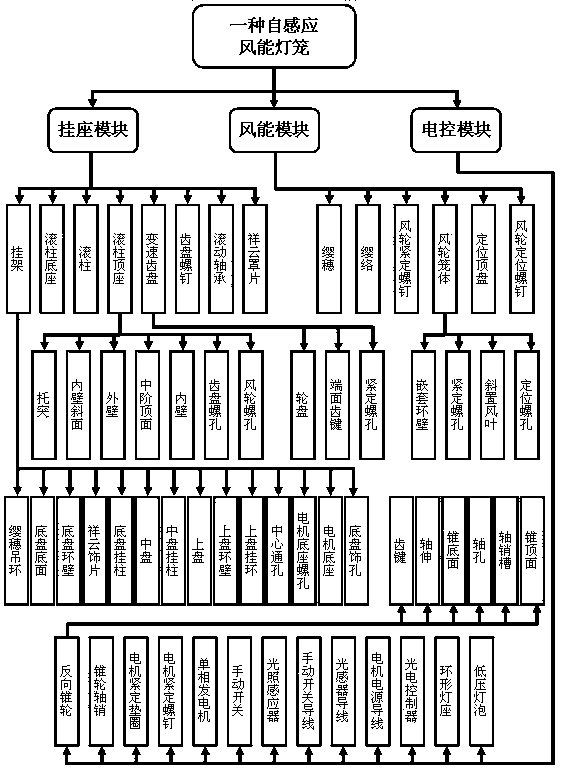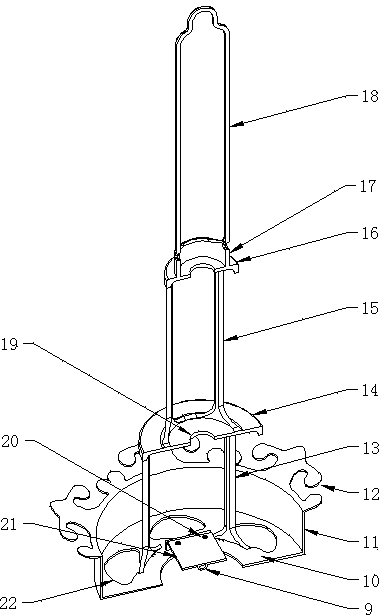Self-induction wind-powered lantern
A technology of wind energy and lanterns, applied in lighting devices, with built-in power supply, electric light source, etc., can solve problems such as lack of light, affect the application range of electroluminescent devices and social use value, etc., achieve beautiful appearance and low operating cost , a wide range of effects
- Summary
- Abstract
- Description
- Claims
- Application Information
AI Technical Summary
Problems solved by technology
Method used
Image
Examples
Embodiment Construction
[0039] As a product technical solution, the present invention can be implemented through the organic combination of corresponding modules and parts. The organizational structure between each module and parts of the product of the present invention, such as figure 1 shown.
[0040] figure 1 Among them, the product in the embodiment is composed of three modules: hanger, wind energy, and electric control, and each module is composed of several different parts. The wind energy module consists of tassels, tassels, wind wheel set screws, wind wheel cage, positioning top plate, and wind wheel positioning screws. The electronic control module consists of reverse cone wheel, cone wheel shaft pin, motor set washer, motor set screw, single-phase generator, manual switch, light sensor, manual switch wire, light sensor wire, motor power wire, It consists of thirteen parts including photoelectric controller, ring lamp holder and low-voltage bulb.
[0041] In the implementation process...
PUM
 Login to View More
Login to View More Abstract
Description
Claims
Application Information
 Login to View More
Login to View More - R&D
- Intellectual Property
- Life Sciences
- Materials
- Tech Scout
- Unparalleled Data Quality
- Higher Quality Content
- 60% Fewer Hallucinations
Browse by: Latest US Patents, China's latest patents, Technical Efficacy Thesaurus, Application Domain, Technology Topic, Popular Technical Reports.
© 2025 PatSnap. All rights reserved.Legal|Privacy policy|Modern Slavery Act Transparency Statement|Sitemap|About US| Contact US: help@patsnap.com



